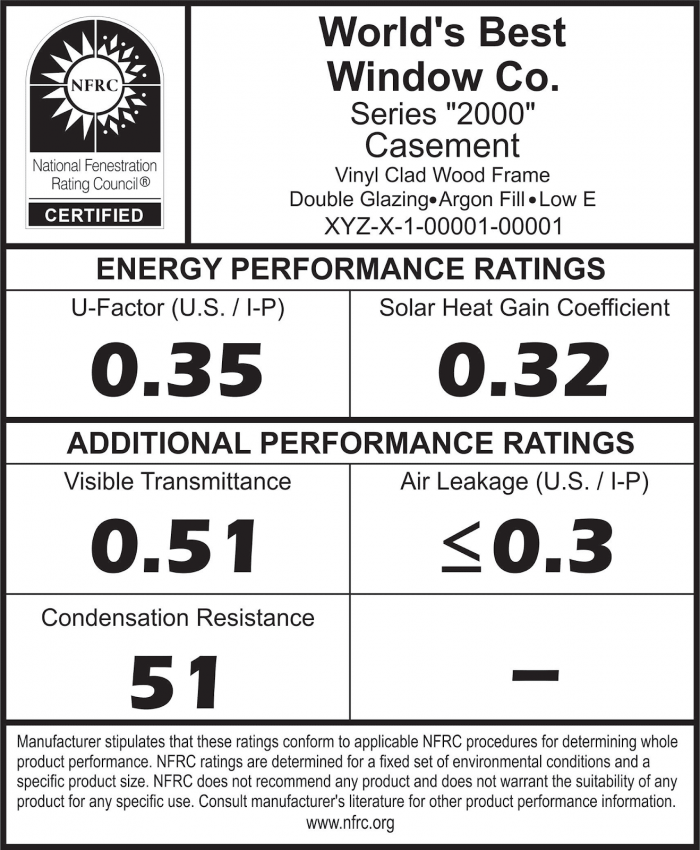For 40 years, Magic has provided the GTA with some of the most advanced energy-efficient windows in the world. Our innovative replacement windows, patio doors and Window Walls can add style and performance to any home. Welcome to our blog, where we provide consumers with the information and inspiration they need to make informed decisions about replacing their windows.
Even for the most diligent and energy-conscious homeowners, windows, doors, and skylights can be a major source of energy loss in the home. In some cases, the losses can climb to 35%.1 In Toronto, Mississauga, Oakville, and Ontario cottage country, where temperatures fluctuate so dramatically over the course of the year, this amount of energy loss equates to inflated energy bills. At a time when smart energy usage and conservation are at the forefront of the national conversation, it’s imperative that homeowners take whatever steps they can to mitigate energy loss.
And while there are plenty of things homeowners can do to make their homes more efficient, installing energy-efficient windows presents an effective, long-term solution. Read on to learn what window features to look out for that will help to better seal your home against unwanted energy loss.
What Certifications Exist For Energy-Efficient Windows?
The terminology that seeks to define and standardize what makes a window energy-efficient can be difficult to understand. Without accessible information, how can homeowners reliably tell which characteristics to value? These are the reasons why third-party organizations such as the National Fenestration Rating Council (NFRC) exist. They have developed the necessary criteria to help homeowners understand when they are buying an independently-evaluated, energy-efficient product.
What is the National Fenestration Rating Council (NFRC)?
The NFRC is an independent, industry-specific non-profit organization that establishes objective window, door, and skylight energy performance ratings to help you compare products and make informed purchase decisions in the following ways:2
- Communicating the energy performance of products using the NFRC label
- Helping you understand the different categories of energy performance
- Providing tips, tools, and educational resources about windows, doors and skylights.
The NFRC is an authoritative, industry-specific body that comprehensively compares energy-efficient windows.3 They provide standardized ratings in four key energy performance categories. What are those categories? See the sample label below and read on for more information about each metric.

Energy-Efficiency Metrics
The following factors are the most important in determining the energy efficiency of windows and doors.| NFRC Factor | What it Measures | NFRC Ideal Range | What to Look For |
|---|---|---|---|
| U-Factor | Rate of heat loss through a window. | 0.20 – 1.20 | Lower Numbers |
| Solar Heat Gain Coefficient (SHGC) | How much solar radiation (heat) a window lets into the home. | 0 - 1 | Varies With Climate |
| Visible Transmittance | How well a window permits the flow of natural light. | 0 - 1 | Higher Numbers |
| Air Leakage | How well a window prevents unwanted airflow. | 0 - 1 | Lower Numbers |
1. Window U-Factor
This is a term used to describe the rate of heat loss through a window. The lower the U-factor, the better the window is at mitigating heat loss. When comparing between two window units according to the NFRC’s standards, it’s important to look for the lower of the two numbers.
To improve the performance of our energy-efficient windows and doors, we use gas fills. Gas fills are an essential step in creating an insulated glass unit (an IGU). In these units, our manufacturers fill the space between the glass units with krypton or argon gas. These heavier, noble gases are preferable to filling the unit with air because they can better impede the transfer of heat through a window.
Most IGUs on the market are separated by ½ – ¾ of an inch. Due to our innovative approach to window hardware design, we are able to extend that space to a full inch. This means we can fill our IGUs with 25%-50% more gas. More gas leads to more effective insulation.
What to Look for With U-Factor: Lower numbers
NFRC Range3: 0.20–1.20
Magic-Series Casement Windows: 0.26 – 0.30
With Our Retractable Screens and Blinds: 0.17 – 0.30
2. Solar Heat Gain Coefficient
This is a number used to represent how much solar radiation a window lets into the home. In other words, it determines how well a window can resist unwanted heat gain. The lower the SHGC number, the better the window unit is at reflecting and repelling heat.
In order to improve SHGC, energy-efficient windows come equipped with Low-E (Low Emissivity) coating. This transparent, incredibly thin coating helps the window reflect unwanted solar heat, allowing homes to cool more efficiently in warmer temperatures Additionally, it also reflects the radiant heat emitted by objects inside the home (such as an HVAC unit) back into the home, which can help to reduce heating loss during the colder months.
Depending on the climate, the right amount of SHGC can be a sliding scale. In warmer climates, a lower SHGC is beneficial; in colder climates, a high SHGC can help to let more solar heat into the home. Conversely, in Ontario, where the climate fluctuates drastically over the course of a year, it’s much more of a balancing act.
One of the most beneficial aspects of our retractable Solar Shades is the fact that you can essentially customize the SHGC to whatever you’d like. This way, you can easily let more or less solar heat into the home depending on the weather.
What to Look for With SHGC: Varies with Climate
NFRC Range3: 0 – 1
Magic-Series Casement Windows: 0.16 – 0.45
With Our Retractable Screens and Blinds: 0.12 – 0.45
3. Visible Transmittance (VT)
Moving from heating and cooling, VT is a metric that determines how well a window permits the flow of natural light into a home. The higher the VT, the better. By allowing more natural light, a window helps reduce the need for artificial light sources. At Magic, our high-efficiency double-glazed windows (two panes of glass in the frame) have excellent VT ratings across our entire product line.
One of the most important reasons for replacing your windows is to let more light in your home. While some companies pitch their triple-glazed windows by touting their lower U-factor, they fail to mention the fact of the lower VT ratings brought on by triple-glazed designs.
All this talk of more natural light in the home is essential, but what about when you don’t want light coming into the home. This is where our retractable Thermal Blinds can really help. When engaged, it effectively reduces VT to 0 to help with privacy, security and when you’re trying to sleep in on a Sunday morning.
What to Look for With VT: Higher Numbers
NFRC Range3: 0 – 1
Magic-Series Vertical Sliders: 0.33 – 0.59
With Our Retractable Screens and Blinds: 0 – 0.59
4. Air Leakage
Air leakage infiltration measures the amount of airflow into the building via the window and exfiltration is the flow of air out of the building. The lower the number, the better your windows will be at preventing unwanted airflow.
What to Look for With Air Leakage: Lower Numbers
NFRC Range3: 0 – 1
Magic Sells Premium Energy-Efficient Windows in Toronto
If you’re in the market for energy-efficient replacement windows and doors, we offer premium designs to suit any home and any preference. We design our windows to be as energy-efficient as possible. All of our window and door units meet the rigorous energy-efficiency standards of the National Fenestration Rating Council. For a full breakdown of the efficiency metrics of our product line, click here.
To learn more about how our replacement windows can improve your home’s energy efficiency, book a free, no hassle consultation today. One of our certified project managers will help to explain the innovative design features that set our windows apart. Contact us today and see first-hand why Magic produces the world’s most advanced replacement windows.
LEARN MORE ABOUT WINDOW REPLACEMENT IN TORONTO:
Toronto Window Replacement: Everything You Need to Know
What is the Cost of Window Replacement in Toronto?
The Window Energy Rating Costs You Money: So Why Do Companies Promote It?
Premium Toronto Casement Windows: Learn More Here
Toronto Patio Doors From Magic
Toronto Star Readers Named Us The Best Window & Door Company: Here’s Why
The Best Toronto Window Installation & Warranty
Sources:
1. Natural Resources Canada. “Windows, Doors and Skylights”
2. National Fenestration Rating Council. “About NFRC”
3. National Fenestration Rating Council. “Window Performance Label”
4. Natural Resources Canada. “Ratings and Certification”

